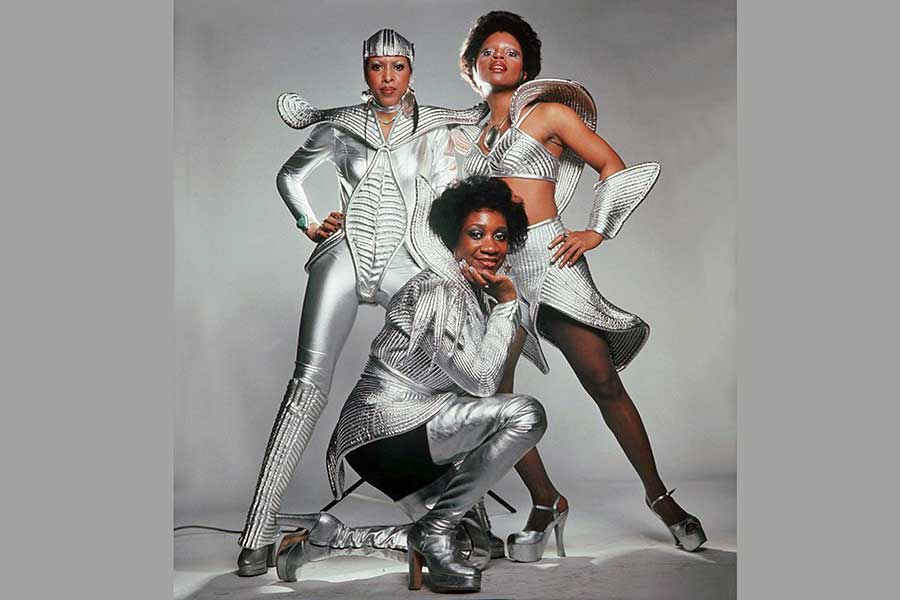The Philadelphia Music Alliance inducts Jill Scott, Sister Sledge, McFadden & Whitehead, Sister Rosetta Tharpe, The Soul Survivors, WOGL’s Bob Pantano and the Ruffhouse Records team of Chris Schwartz and Joe Nicolo into its Philadelphia Music Walk of Fame next week.
But one long-awaited induction will stand out.
Those attending the afternoon ceremony on Avenue of the Arts or the evening gala at the Fillmore Oct. 4 will witness Labelle — the legendary rocking R&B trio of Patti LaBelle, Sarah Dash and Nona Hendryx — finally getting their due.
Dash and Hendryx were both born and raised in Trenton (unlike the Philly-born Patricia Holt, who later became “LaBelle”), and each discussed how crucial their upbringing in the churches of northern New Jersey was to whom they would eventually become.
Hendryx, currently releasing “The World of Captain Beefheart” with guitarist Gary Lucas, mentioned that it was Dash who connected her to Labelle.
“I didn’t really know Sarah, but she just came up to me out of the blue one day and asked me if I wanted to be in a group,” said Hendryx, who also mentioned another local act, called The Ordettes, which included LaBelle and Camden’s Cindy Birdsong. When asked to do a record for Newtown Records by a local manager, it was Hendryx, Dash, Birdsong and LaBelle who united for a studio session for “I Sold My Heart to the Junkman” in 1962.
“I think we got comfortable with each other very quickly,” said Hendryx, an alto to Dash’s soprano. “The harmonies, for some reason, just came very naturally for us. Our voice had a natural blend. And it was natural for Patti to be our lead singer because she had a tremendous voice and a big personality. We had four strong, unique colors.”
When Labelle became three colors with the departure of Birdsong (to The Supremes), Hendryx wondered aloud if the sounds and ideas that eventually defined Labelle — a trip of rediscovery in London and Manhattan, a sartorial image change, socially and sexually aware compositions, mostly by Hendryx but Dash as well — would’ve worked in a quartet setting. Dropping the bouffants and poofy dresses for afros and jeans, then Bowie-esque glam gear, was only part of the funky equation for Labelle.
“Being in London and New York City made us aware of a more cosmopolitan society,” Hendryx said. “We shopped where the Stones shopped in London. It was an evolution.”
The politicized and physicalized songs of “Moonshadow,” “Pressure Cookin’” and beyond, penned by Hendryx, weren’t looked at as oddities within Labelle’s ranks. Contrary to popular belief, Hendryx said, each member was pleased to be moving into the funky and socially and sexually aware present.
“We were artists and happy to be moving with the times, with fellow poets, painters and such. Patti, in particular, blossomed in New York.”
Even in their break-up, Hendryx said each woman remained vibrant, and that the trio talks “way more than you would imagine we do; we’re truly old friends.”
Dash concurs. A Grammy governor for advocacy, a soon-to-be-installed Ambassador of Music for Trenton and a songwriting solo artist whose “One Woman” show is ongoing, Dash laughed when she remembered Hendryx’s claim “that I got her into music. But she had such a great voice, and we needed an alto. Please join the Del Capris.”
Later, the twosome paired LaBelle’s Ordettes twosome (“members on both side fell away due to marriage and babies”), and Dash teased that “we met and merged on the New Jersey Turnpike.”
There was trepidation in having Dash — the daughter of a preacher — move into secular music, but it was her mother who truly recognized Dash’s drive and strong personality.
“And in the end, my dad became my biggest fan,” she said. “I remember him when we played the Metropolitan Opera House, him with his collar on.”
The move to place LaBelle at the forefront was, surprisingly, a business one, in order to satisfy the Musicians Union. As there was already an act called The Bluebelles, the (then) quartet became Patti LaBelle & The Bluebelles, and saved themselves reprinting costs.
“I liked being part of a group; I was holding it down and there were leads and co-leads for me on songs such as ‘Can I Speak to You Before You Go to Hollywood?’” Dash recalled. “I did many leads on stage, especially when Patti’s voice gave out.”
Dash said she was always the truth-seeker and speaker of the bunch and stood for what was best and most soulful for the group.
“There was never any back-biting in me. My views made me the person in the middle, but I never was someone who just went along. I had my own thing and made it known.”
Considering how she steered the trio through changes in music, sound and attitude, Dash was stalwart and strong.
“No, I did not ever want us to wear pants on stage,” she said with a big laugh. “I was a skirt girl. I knew what I wanted to look like. And in terms of how we — and I — sounded, I think that’s clear, even today.”
For more information about the Philadelphia Music Walk of Fame, visit http://www.philadelphiamusicalliance.org.

